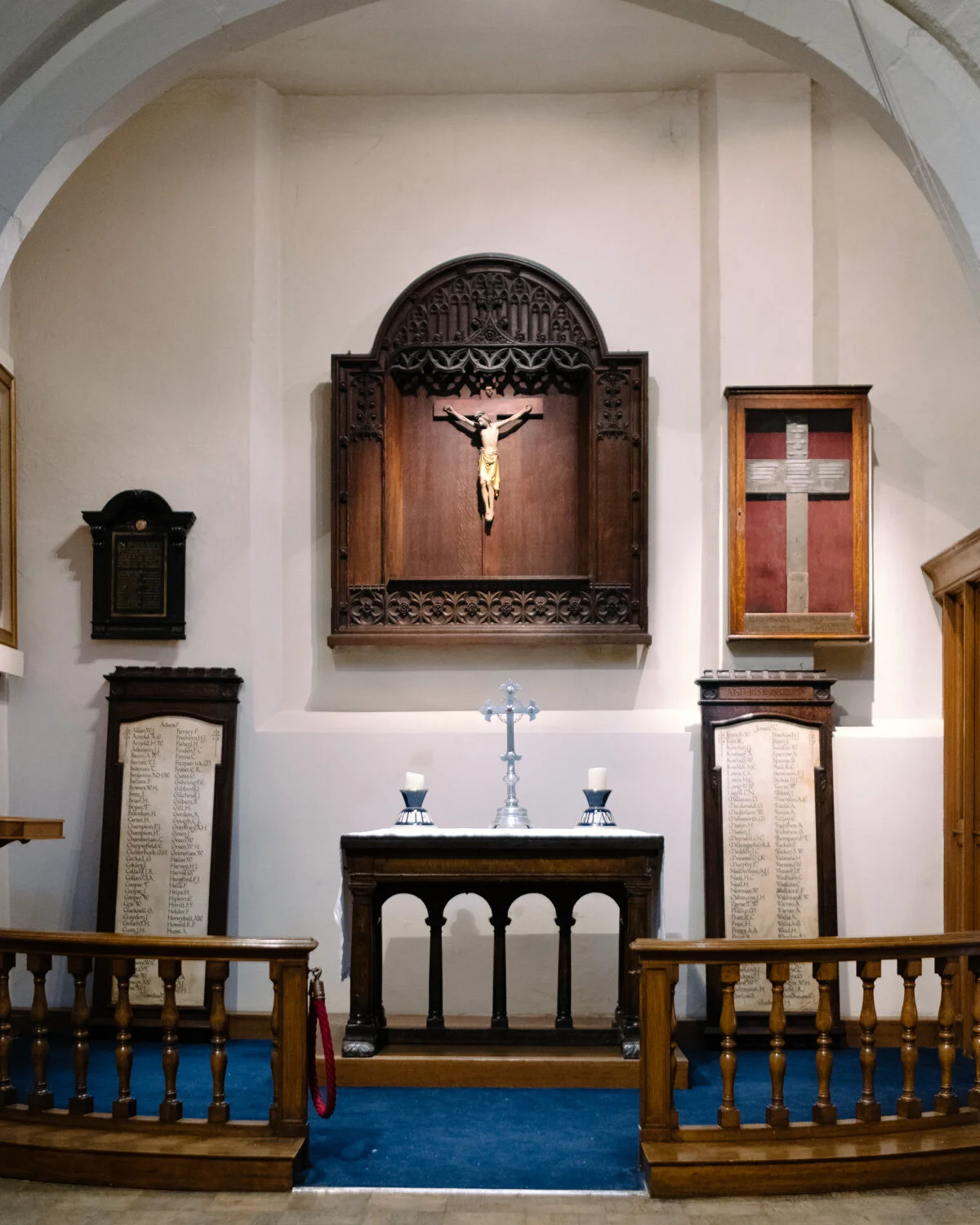World War 1
In 1901, the Bishop of Stepney noted the arrival of George Lansbury, who was to offer moral leadership through the first four decades of the century. ‘He was a secularist lecturer, by name Lansbury… He came to Bow Church, very shamefacedly, and sat at the back behind a pillar. After supper he poured out doubts, questions, desires, as out of a long corked-up bottle, and I was much moved by his sincerity. Thereafter he threw in his lot with the Church, taking Francis of Assisi as his ideal Christian.’
When George Lansbury came to Bow Church he was manager of a local timber mill but in 1903 he became a councillor, acquiring the affectionate nickname ‘GL’ locally for his work as a radical Christian Socialist, devoted to replacing Victorian workhouses with more humane relief for those in need in the East End.
George Lansbury
Minnie Lansbury
Sylvia Pankhurst
GL became Member of Parliament for Bow in 1910 as part of the nascent Labour Party, pledging his support to the cause of women’s suffrage but, after the force feeding of imprisoned suffragettes, he was suspended from parliament for shaking his fist at the Prime Minister, shouting ‘You will go down in history as a man who tortured women.’ In 1912 he fought a by-election on the issue of Votes For Women. When asked why he believed women should have votes, he answered ‘because they are human beings, the same as men.’
In the same year, Sylvia Pankhurst converted a baker’s shop close to the church at 119 Bow Road as the headquarters of the East London Suffragette Federation, and on the night of the by-election a large torchlight procession gathered in the churchyard for a rally. GL lost the election by a narrow margin of 731, putting him out of parliament for ten years, but it became the catalyst for a volatile period of local protest in the cause of women’s suffrage. In December, a peaceful gathering of mainly women and children was suppressed with unnecessary brutal violence by mounted police who kettled the protestors in Campbell Road and rode their horses into the crowd wielding wooden batons.
GL and his children Annie and Bill were all arrested and imprisoned for campaigning for women’s suffrage. Yet the cause was laid aside when World War One broke out in August 1914 and thousands of young men signed up to be sent off to fight in France.
The Loos Cross
The Poplar & Stepney Rifles were a local Territorial Force of around four hundred volunteers who embarked at Southampton in March 1915 before travelling by train, bus and on foot for ten days across France to arrive near the Belgian border. In April, they were sent to the front line, ten miles north of Loos, where they spent the summer preparing for a battle that came on 25th September and lasted until the end of October, costing around twenty thousand British lives without breaking through the German lines. In the battlefield cemetery, a rough wooden cross was labelled with the names of the Poplar & Stepney Riflemen. Today the Loos Cross is held in St Stephen Memorial Chapel at Bow which commemorates all those who died in the conflict.
Meanwhile, a Zeppelin raid in Bow in September 1916 destroyed buildings around the church, resulting in eleven deaths and twenty-five casualties before the airship was shot down over Essex and the crew arrested.
Photograph of St Stephen’s War Memorial Chapel
In the early twenties, uniform rates of taxation were set across London to pay for centralised services such as the London County Council, the Metropolitan Police and the London Water Board, with all boroughs asked to pay equally whether rich or poor. The Borough of Poplar, receiving a low income and facing a large welfare bill, could not afford to pay and under the leadership of George Lansbury who had been Mayor since 1919, they refused. GL justified the Rent Strike, saying ‘If we have to choose between contempt of the poor or contempt of the court, it will be contempt of court.’ He and thirty other local councillors including his daughter Minnie were imprisoned, the men in Brixton and the women in Holloway. For six weeks, council business was conducted from prison while other London boroughs threatened to join the strike until - in an astonishing victory - the government ordered the councillors’ release and amended the law to permit each borough to pay according to their resources.
GL returned to parliament in 1922 and stayed there until 1935 when he resigned leadership of the Labour Party in protest at re-armament. He travelled to German to plead with Adolf Hitler in a bold yet unsuccessful attempt to avert the coming war, for which he was nominated for a Nobel Peace Prize.
During the interwar years, Bow became the focus for the East London Group, painters who rose to international prominence for their streetscapes of the East End. Their inaugural show at the Whitechapel Gallery transferred to the Tate Gallery in Millbank and members represented Britain at the Venice Biennale of 1938. Art classes held by two inspirational teachers, John Cooper & Phyllis Bray, at the Bow & Bromley Institute in the twenties were the catalyst for the origin of the group.
Among the foremost talents were Grace Oscroft, whose family ran a bicycle shop close to the church on the north side of Bow Road, and Henry Silk, who worked as a basketmaker in a shop on the south side of the church. Grace had a painting hung in the Tate Gallery at the age of twenty-six in 1929, while Henry enjoyed sell-out shows at the Lefevre Gallery in Mayfair. Other members of the group included Elwin Hawthorn, Cecil Osborne, Harold & Walter Steggles, and Albert Turpin.
For more information on research Bow Church has done on the Men of Mile End look here.






